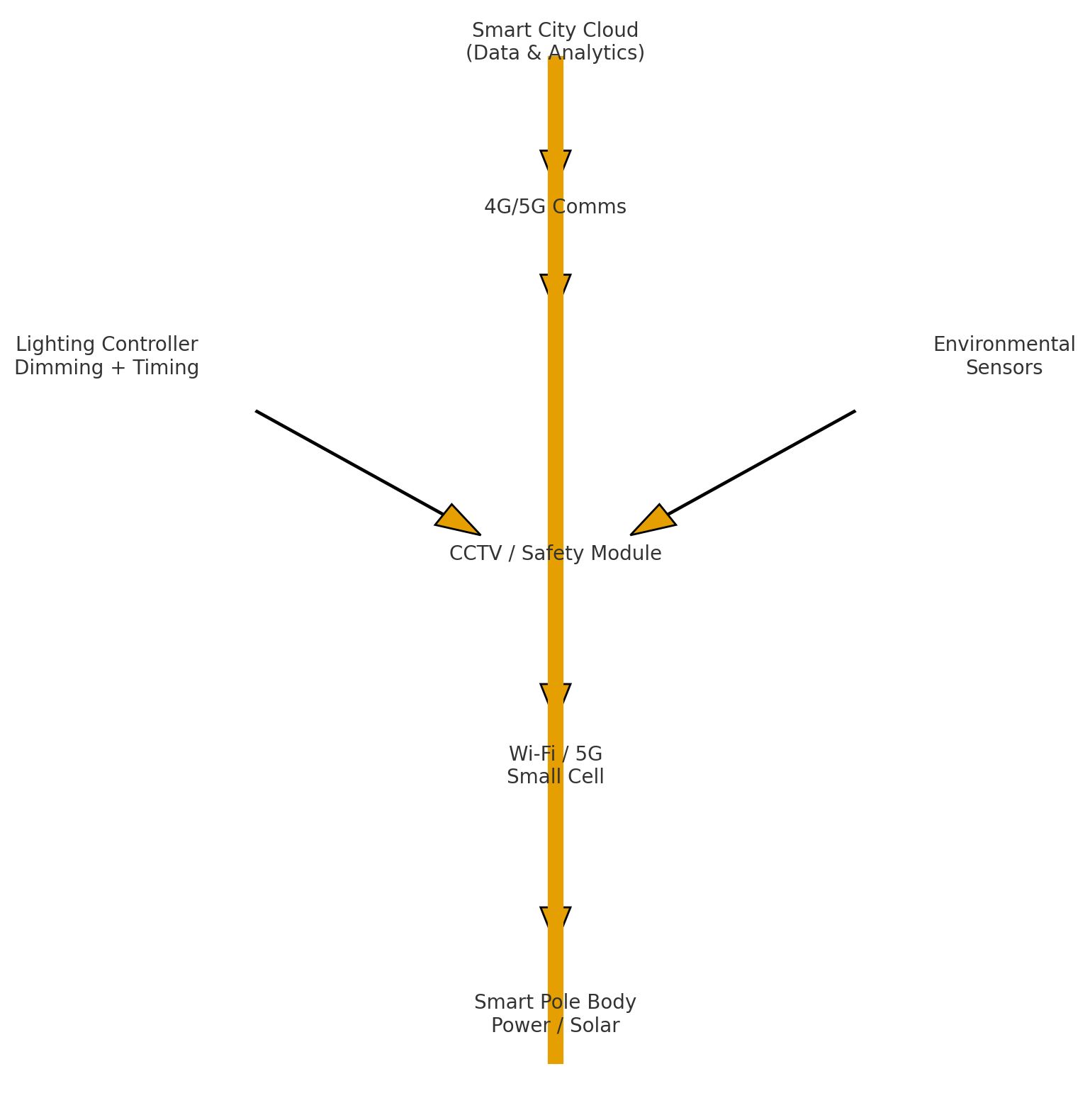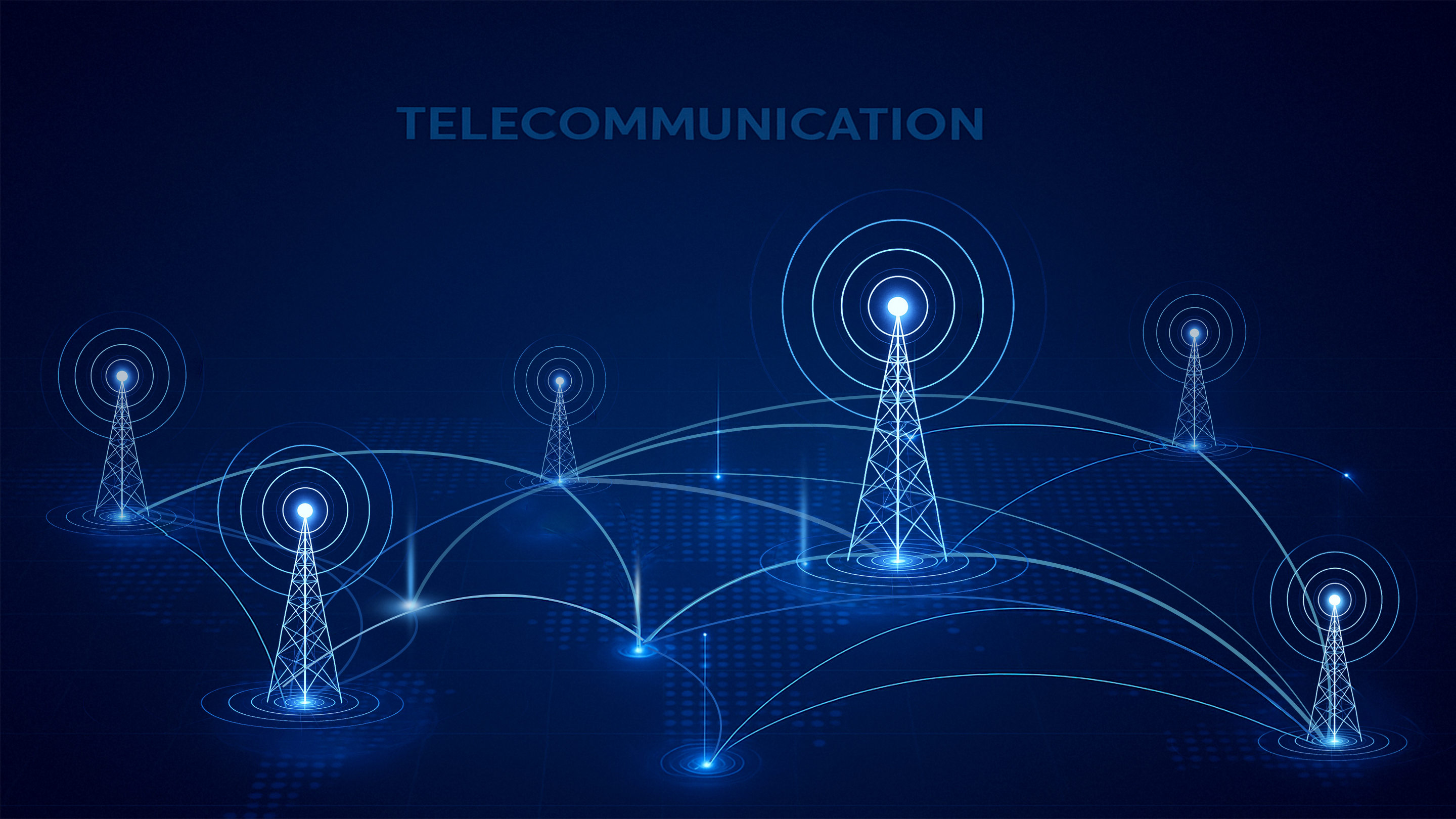Best ROI Effectiveness of Smart Pole Upgrading for Smart City
Cities around the world are rapidly shifting toward digital infrastructure. As populations grow, energy costs rise, and public expectations change, municipal leaders are looking for solutions that improve efficiency without increasing long-term expenses. This is where the concept of the smart city becomes vital — a city made more efficient, safer, and more sustainable through connected technology.
At the center of this transformation stands one piece of infrastructure that quietly integrates multiple urban systems:
Smart poles combine lighting, connectivity, sensors, surveillance, digital services, and energy management into a single structure — simplifying urban upgrades and improving public experience. This article explains, in a clear and accessible way, what smart cities and smart poles are, how they work, why they deliver strong ROI, and what benefits they bring to governments, developers, communities, and businesses.
According to DOE projections, if DOE targets for efficiency, controls, and connected lighting are met, advanced lighting systems are expected to save 6.9 trillion kWh of electricity by 2035. The total cumulative energy savings would be equivalent to $710 billion in avoided energy costs and 2.1 billion metric tons of avoided carbon dioxide emissions. Cited from DOE.
What is a Smart City?
A smart city is an urban environment that uses digital technologies to improve how the city operates. Instead of relying on manual processes or outdated infrastructure, a smart city uses IoT sensors, big data, cloud platforms, and intelligent devices to run public services more efficiently. The goal is simple: enhance the quality of life while reducing operational cost. Smart poles play an essential role because they provide the physical platform needed to deploy these technologies across an entire city.
- A smart city typically includes:
- Smart lighting (smart city control system)
- Air quality monitoring ( Air Quality Data Collected at Outdoor Monitors Across the US )
- Environmental monitoring
- Traffic flow management
- Public safety systems
- Smart utilities (water, electricity, waste)
- Smart mobility (EV charging, shared vehicles)
- Digital public services
What is a Smart Pole?
A smart pole — sometimes called an intelligent street pole, IoT pole, or intelligent street light pole — is a multifunctional device that integrates several urban technologies into one structure.
- Typical smart pole features include:
- LED smart street lighting
- Smart lighting control system
- CCTV or AI video analytics
- Environmental sensors (PM2.5, CO₂, weather)
- Public Wi-Fi or 5G small cells
- Emergency call buttons
- EV charging ports (optional)
- Digital signage or information display
- Solar panels or hybrid power systems
- Data collection and monitoring modules
Why Smart Poles Are Becoming Essential for Smart Cities
Smart poles are being adopted worldwide because cities face increasing challenges:
1. Rising energy costs
Traditional lighting consumes large amounts of electricity. Switching to LED + smart dimming cuts energy use by 30–70%.
2. Growing demand for connectivity
Cities need more device connectivity — for 5G, Wi-Fi, and IoT sensors. Smart poles provide ideal locations.
3. Urban safety improvements
Surveillance, emergency alerts, and lighting upgrades enhance pedestrian and vehicle safety.
4. Need for real-time data
Cities require accurate, continuous data to manage traffic, pollution, and public services.
5. Limited municipal budgets
Smart poles consolidate infrastructure to reduce installation and maintenance expenses.
Benefits of Smart Poles for Cities and Communities
Energy Efficiency and Cost Reduction
A smart pole’s LED system combined with a smart lighting controller can reduce energy consumption by 30–70%. Dimming during low-traffic hours and turning lights on/off automatically further lowers costs.
Better Public Safety
Smart poles support: HD CCTV, emergency call buttons, automated alerts, and improved nighttime visibility. This leads to safer streets and faster emergency response.
Strong Connectivity Infrastructure
Cities need more communication capacity. Smart poles are ideal mounting points for:
5G networks ( America’s 5G Future )
Wi-Fi hotspots
IoT gateways
Public broadcasting systems
Real-Time City Data
Environmental and traffic data allow city leaders to:
Monitor pollution, manage noise, adjust traffic flows, plan infrastructure improvements
Digital Urban Services
Smart poles support:
Digital signage
Tourism assistance
Public information displays
Community announcements
Reduced Maintenance Costs
Traditional lighting requires manual inspection. Smart poles automatically report:
lamp failure
sensor problems
power issues
This lowers maintenance expenses and improves reliability.
Aesthetic and Space Efficiency
Instead of scattered installations, smart poles unify multiple systems into a single device — reducing street clutter.
ROI: Why Smart Poles Are Cost-Effective?
Smart poles may appear expensive initially, but they deliver strong long-term returns through:
1. Lower power bills
LED + smart controls = significantly less energy consumed.
2. Reduced labor costs
IoT monitoring eliminates unnecessary inspections.
3. Revenue opportunities
Cities can generate income from:
5G carrier leases
Advertising on digital screens
Data partnerships
EV charging fees
4. Longer equipment lifespan
Smart controllers optimize LED performance, reducing wear.
5. Consolidation savings
One smart pole replaces:
a street light
a surveillance pole
a Wi-Fi tower
an environmental sensor
a digital signage structure
What Smart Poles Are Actually Used For?
Smart transportation corridors
Lighting, cameras, and sensors help manage traffic in busy areas.
Green city planning
Environmental data helps governments meet sustainability goals.
Tourism and commercial districts
Digital signs offer navigation and event promotions.
University and corporate campuses
Smart poles improve safety and connectivity.
Residential communities
Safer streets, cleaner air, and real-time monitoring.
Coastal and remote regions
Solar-powered smart poles provide infrastructure where grid access is limited.
Frequently Asked Questions about Smart City Light
Are smart poles expensive to maintain?
No. Smart poles reduce maintenance by using real-time fault detection.
Do smart poles work without grid electricity?
Yes. Many models use solar + battery for complete energy independence.
Can smart poles improve public safety?
Absolutely. High-definition cameras and emergency buttons enhance security.
How long does a smart pole last?
The pole structure lasts 20–25 years, while electronic modules last 5–10 years.
What networks do smart poles support?
4G, 5G, Wi-Fi, and IoT networks such as NB-IoT or LoRaWAN.
Can smart poles generate revenue?
Yes, through advertising, 5G leases, data services, and EV charging.
How much energy do smart poles save?
Typically 30–70%, depending on dimming strategies and sensors.
Post time: Nov-24-2025





